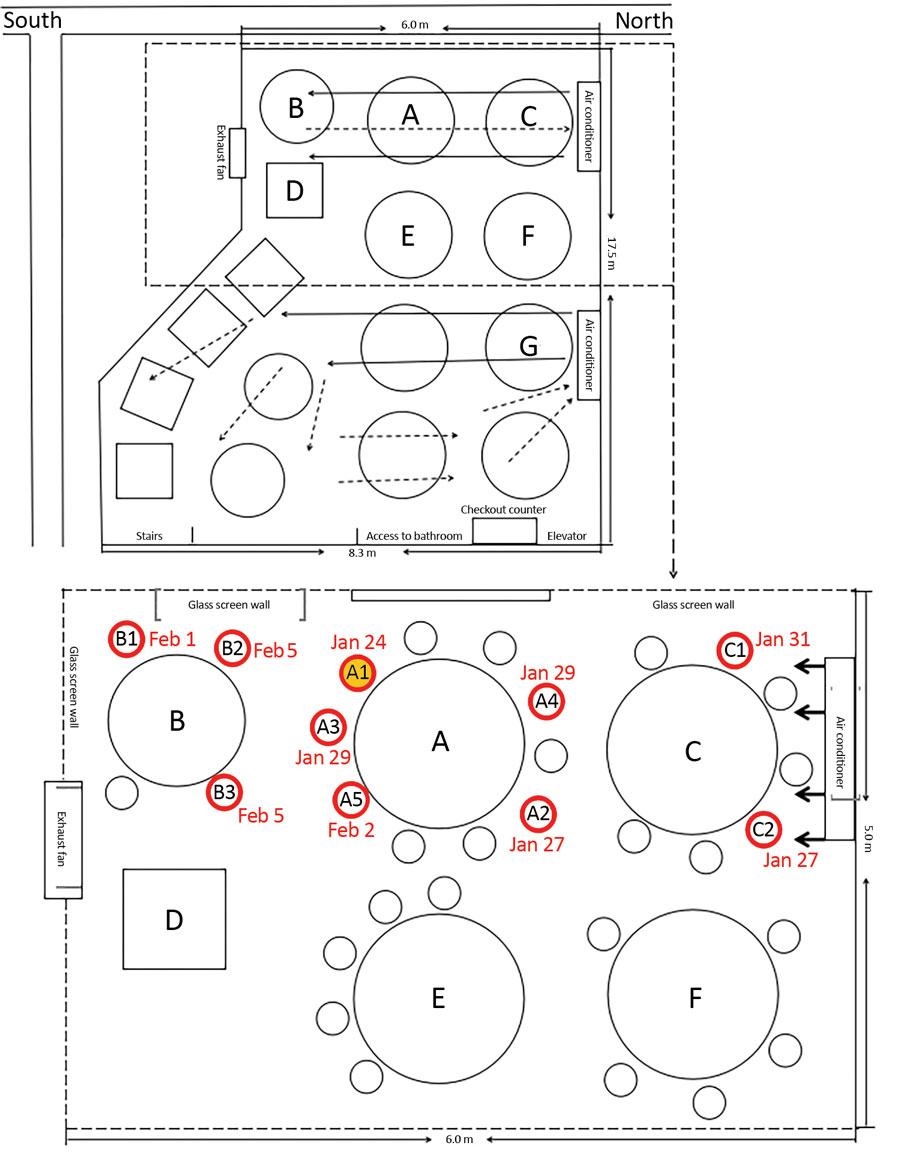Covid-19: When it comes to restaurants, the bill can be hefty
A new study reconstructed a COVID-19 transmission process in a restaurant in Guangzhou, China. It may have been a restaurant's air conditioning system that allegedly spread CoV-2 SARS to nine people sitting next to an infected person.
The study may pose lessons to be learned as restaurants reopen in some parts of the world
A new study reconstructed a COVID-19 transmission process in a restaurant in Guangzhou, China. It may have been a restaurant's air conditioning system that allegedly spread CoV-2 SARS to nine people sitting next to an infected person.
Made in cooperation with our partners from esanum.fr
This study, published in early April, is of great relevance given the recent end of containment and the reopening of restaurants already underway in Germany (in some states such as Mecklenburg-Pomerania) and scheduled for the first days of June for France and Italy.
Researchers have reconstructed the contacts and movements of 10 cases of COVID-19 reported between January 24, 2020, and February 10, 2020 within 3 families. They found that all 3 families ate at the same air-conditioned restaurant on January 24 in Guangzhou, China.
It is a five-story restaurant, each with its own air conditioning system. The floor in question is 145 m2. The authors drew up a diagram with the seating arrangement and the airflow rate of the restaurant's air-conditioning system.

- Family A had just arrived from Wuhan.
- The search for contact persons did not find any other exposures for families B and C, except for the lunch next to family A, which lasted about an hour.
- Family A's table was located between families B and C.
- The tables were separated by one meter.
- In total, there were 91 people in the restaurant at that time (83 customers, 8 employees).
- Of the 83 customers, 10 became ill with COVID-19 (5 in family A, 3 in family B, 2 in family C).
- Patient A1 developed symptoms late in the day on January 24.
The remaining 73 clients were identified as close contacts and placed in quarantine for 14 days. During this time, they did not develop symptoms and the tests were negative.
The only known source of exposure for the infected individuals in families B and C was patient A1. The authors determined that the virus had been transmitted to at least 1 member of family B and at least 1 member of family C in a restaurant and that other infections in families B and C were due to transmission within the family.
The researchers concluded that the infection was spread by respiratory microdroplets (> 5 μm). They normally have a limited range (< 1m). However, depending on the seating arrangement, patient A1 was more than 1m away from patients B1 and C1. It is the flow of the air conditioning that seems to have facilitated the transport of the micro-droplets from the table of family A to that of family B and then to that of family C.
The fact that only contacts sitting at tables placed in the axis of the air conditioning flow were infected suggests that transmission occurred by this means alone. This study is useful in highlighting the need, in closed rooms with the public, to space the tables more than one meter apart and to control the airflow of the air conditioning systems.
One of the limitations of this study is that the authors did not carry out aerodynamic tests to support their hypothesis. In addition, the authors did not thoroughly investigate other hypotheses of contagion.
Source:
Lu J, Gu J, Li K, et al. COVID-19 Outbreak Associated with Air Conditioning in Restaurant, Guangzhou, China, 2020. [published as a preprint, April 2nd, 2020]. Emerg Infect Dis. 2020;26(7):10.3201/eid2607.200764. DOI:10.3201/eid2607.200764